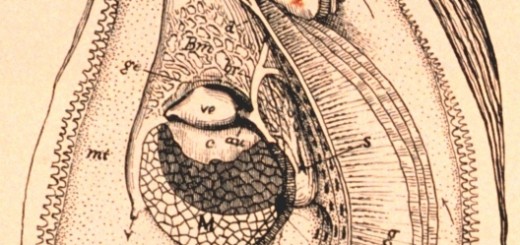Predators and Diseases
Alex Sierant
Predators and Diseases in Pacific Oysters
The pacific oyster , Crassostrea gigas, lives a dangerous life for an immobile shellfish. An oyster grown in the pacific northwest has several different predators out to get it. The Red Rock Crab (cancer oregonensis,) sea star (Pisaster ochraceus,) and the Japanese Oyster Drill (Ocinebrellus inornatus). These seem like unlikely predators, but they are all quite savage!
Cancer oregonensis is a small red crab that can be located in the northern Puget Sound and Hood Canal. C. oregonensis typically prey on under market sized oysters, less than 60 mm long. It has adapted to be able to crush hard shells with its sharp tip claws and powerful molar teeth. To get to the meat of the oyster, C. oregonensis chips away the margin and commonly punctures the shell. A full sized Red Rock crab can grow to have a carapace width (CW) of 45mm, a bit bigger than a silver dollar. Once fully grown it can consume just about any oyster under 60mm in length at the rate of roughly 0.1 oyster per day (5 crabs in one oyster tray can consume 120 oyster within an 8 month period). Even crabs that are 20 CW can consume an oyster 30mm in length. C. oregonensis gets into oyster trays when it is very young and roughly 2mm CW, so it can easily get in through the 6mm mesh tray. After about three months of easy living inside the tray C. oregonensis has reached predator size. When they are not lucky enough to have a mesh tray, they are commonly found in the subtidal and intertidal zones in holes or maybe a dead barnacle.
Next up in the list of shellfish savages is Pisaster ochraceus Sea star. It is found in the rocky intertidal zone to 90m in depth, from Alaska to Baja California. P. ochraceus can be anywhere from 10- 18 inches in diameter and is quite colorful. Colors range from yellow, orange, brown, reddish, and even purple. A young P. ochraceus goes through several larval stages before it metamorphosizes into the five armed adult we recognize as a star fish. Once it reaches this stage it floats around till the sensory tubes in the arms detect prey through chemical changes and motion in surrounding area. When it finds an oyster, “the starfish wraps arms around the oyster like a hideous lover and forces the shells apart steadily and thrusts its stomach it and digest it.”(Fisher pg.6) If the oyster is too big to be swallowed Whole then it will be disgusted before it’s swallowed. Then P. ochraceus will detach and continue till it can find new prey.
The Japanese Oyster Drill, Ocinebrellus inornatus, is a marine snail that drills holes in oyster shells to access the meat inside. O. inornatus hitched a ride to the pacific northwest with the Crassostrea gigas pacific oyster when they were shipped from Japan and the dumped into Samish Bay in 1919. O. inornatus does not migrate and is spread by careless transplanting. Once an area is affected it must be quarantined until you deal with them. They can be removed by hand or if the oyster is immersed in fresh water. In “Aquatic Invasions (2012) Volume 7, Issue 2: 181–191” the study found that O. inornatus actually prefers the non native pacific oyster 7:1 compared to the native Olympia oyster Ostrea lurida. To drill into through the calcium carbonate shell O. inornatus thrusts it radula back and forth while salivating sulfuric acid, then sucks it out using its proboscis. The radula is a tiny ribbon like structure covered in tiny teeth that drills a perfectly circular hole with the help of the sulfuric acid to soften the shell. Once the hole is made, the proboscis goes into goes in and sucks out the oyster over the course of up to two weeks for adult sized oysters.
Alex Sierant
Disease
In the pacific northwest oyster diseases are not very common due to the limited time the water is above 13 degrees celsius. Vibrio parahaemolyticus occurs naturally in summer months when the water is warmer. An uncooked oyster infected with vibrio can cause gastroenteritis in humans. If someone with a weaker immune system eats an infected oyster it even could kill them. If a vibro oyster is eaten the effects are felt within 12- 24 hours and lasts two to three days. Symptoms include but are not limited to diarrhea, nausea, stomach cramps, headache, vomiting, fever, and chills. To be sure that this doesn’t happen the FDA suggest cooking the oyster thoroughly. Food Safety News recommends putting oysters on ice or refrigerate them as soon as possible after harvest. If a receding tide has exposed oysters for a long time, don’t harvest them. Cooking oysters at 145° F for 15 seconds destroys Vibrio bacteria. Rinsing fully-cooked oysters with seawater can recontaminate them.


